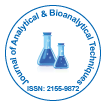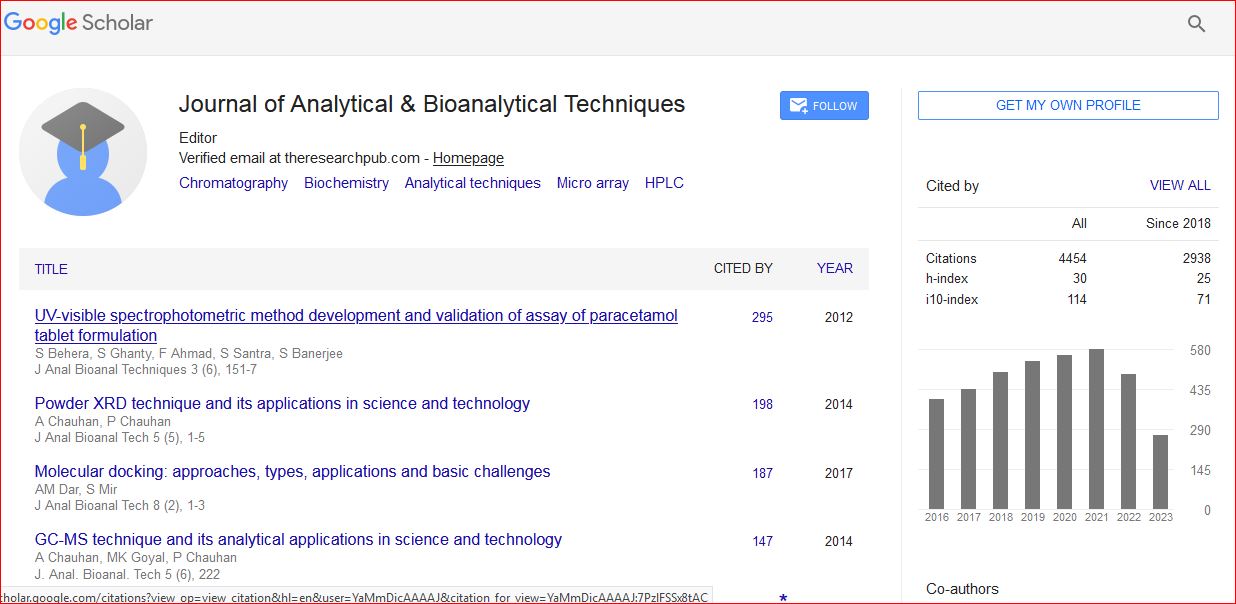Compact Overview to the Role of Chromatographic Techniques for the Separation of Radioisotopes: A Review
*Corresponding Author: Khalid Hameed, Department of Chemistry, University Of Education Lahore, Faisalabad Campus, Pubjab 37300, Pakistan, Email: khalidhameed087@gmail.comReceived Date: May 05, 2024 / Published Date: Jun 10, 2025
Citation: Hameed K, Fatima A (2025) Compact Overview to the Role of Chromatographic Techniques for the Separation of Radioisotopes: A Review. J Anal Bioanal Tech 16: 758.
Copyright: 2025 Hameed K, et al. This is an open-access article distributed under the terms of the Creative Commons Attribution License, which permits unrestricted use, distribution and reproduction in any medium, provided the original author and source are credited.
Abstract
Chromatography is a vital tool in the radioisotope separation process because it provides a flexible and effective way to separate individual isotopes from mixtures. The principles methods applications and developments in chromatography for radioisotope separation will be examined in this review. The apparatus used in High Performance Liquid Chromatography (HPLC) is extensively described in a number of handbooks. High performance liquid chromatography is usually known by its abbreviation HPLC while other acronyms such high efficiency LC are also used. HPLC has only lately made it feasible to produce and purify tracers for radioimmunoassay. Radio thin layer chromatography or radio TLC is widely used to improve radio synthesis processes. It is used to determine the reaction conversion or to evaluate the purity of radiopharmaceuticals. We talk about the isotope determination and isobaric interference removal of recent findings obtained with an Inductively Coupled Plasma Mass Spectrometer (ICP-MS) for the characterization of the complete inventory of actinides and fission products in high level liquid waste samples and spent nuclear fuel. Using alpha spectroscopy Cerenkov Liquid Scintillation (LS) counting, Inductively Coupled Mass Spectrometry (ICPMS) and five column chromatography separation a unique technique has been developed to identify Pu, Np, Th, U, Am, Cm, Pm, Y and Sr isotopes simultaneously with iron-55. Water samples spiked swipes and expert testing water standards were assessed in order to validate the separation technique. The outcomes demonstrate strong agreement with the predicted values. There is apparatus and technique available for incredibly precise evaluations of the stable isotopic composition of organic molecules separated by GC. Protein phosphorylation is an important component of biological signaling networks that can be reversed. In response several methods including immobilized metal affinity capture for phosphorylated peptide enrichment have been devised. To adapt supercritical fluid technology to this specific PET application we built a preparative-scale supercritical CO2 fluid radio chromatograph which we utilized to purify (11C) toluene. By taking use of the variations in the chemical properties of the radioisotopes such as polarity charge and molecular size these techniques are essential to the separation process. These methods have special benefits and may be adjusted to the particular characteristics of the radioisotopes being separated which makes them indispensable instruments in a variety of domains such as radiochemistry environmental monitoring and nuclear medicine.

 Spanish
Spanish  Chinese
Chinese  Russian
Russian  German
German  French
French  Japanese
Japanese  Portuguese
Portuguese  Hindi
Hindi 
